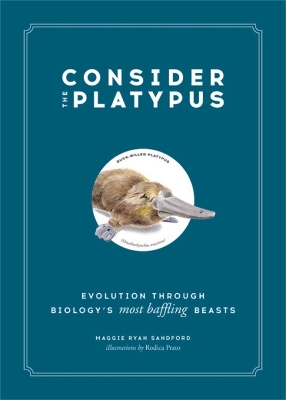I had this book on my list to buy long before it was published, so when I did buy it a few months ago, I was surprised: I was expecting the book to be about the platypus. Silly me.
It is, instead, a book about the animals that display aspects of evolution in its most baffling forms, or animals through whom are knowledge of evolution and homo sapiens has been advanced. It's cheekily written, and could almost be used as a supplemental text for introductory classes in high-school, though it's nowhere near comprehensive enough. Each animal gets between 2-4 pages, with a generous, though not excessive, illustrations.
I learned a bit about just about everything, and learned about a few creatures I'd never really heard of before. Light, enjoyable to read, and something that is easily picked up and digested in small bits.
